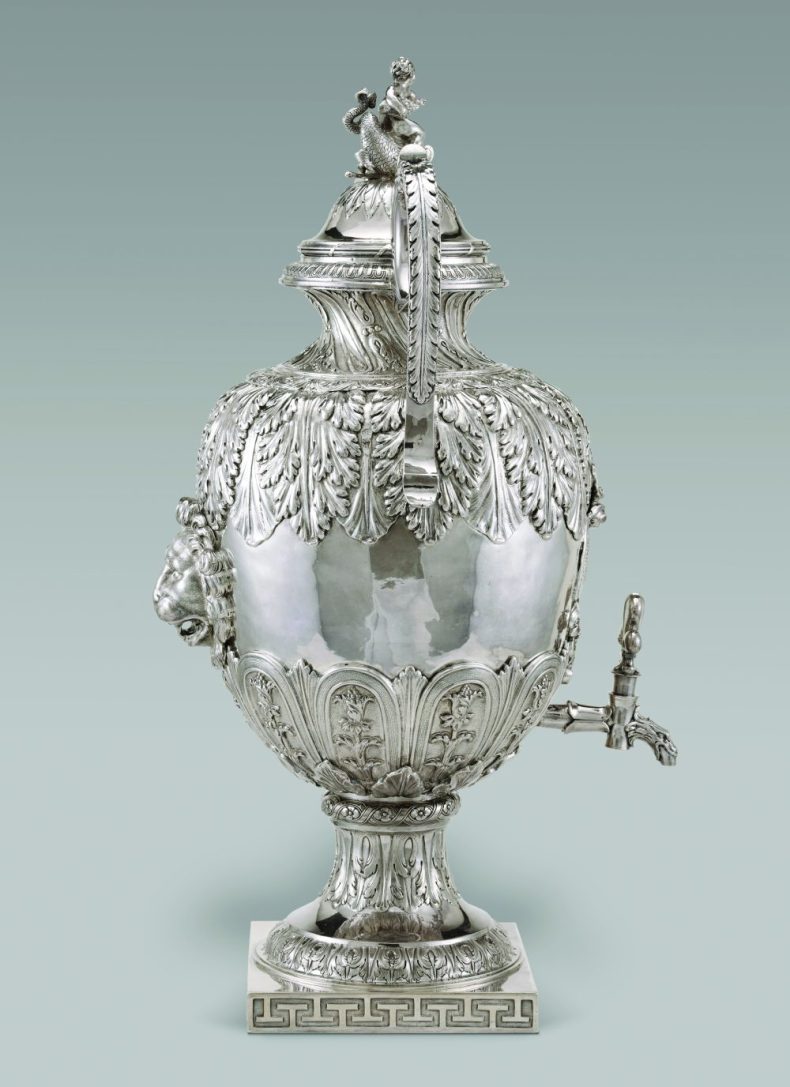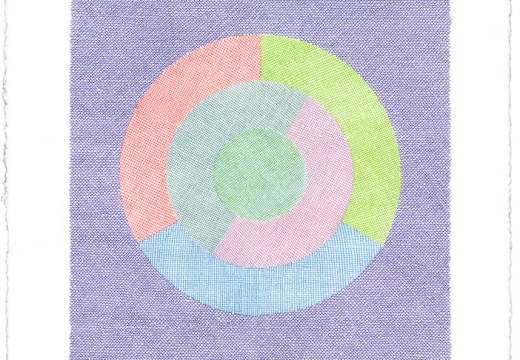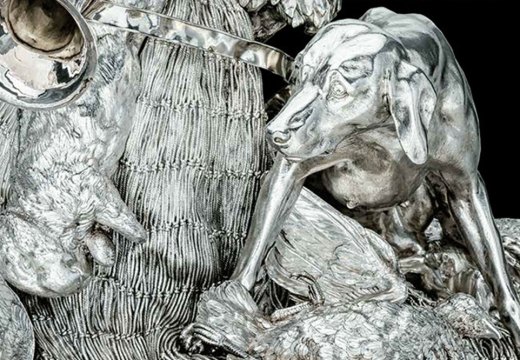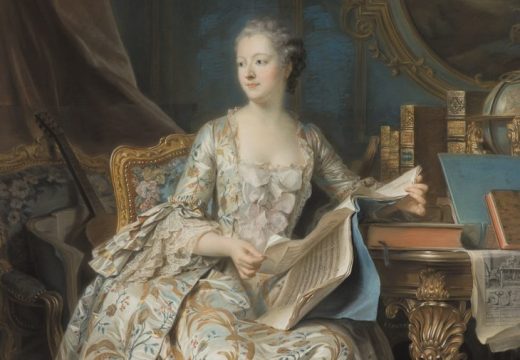From the December 2023 issue of Apollo. Preview and subscribe here.
In this online publication, Charissa Bremer-David, who until 2021 was curator of decorative arts at the Getty, celebrates the holdings of French 17th- and 18th-century silver assembled by the museum’s founder J. Paul Getty (1941–1976) and by her predecessor, the founding decorative arts curator Gillian Wilson, who retired in 2003. This is the second open-access publication produced by the Getty, following the appearance of French Rococo Ébénisterie in 2022.
Getty collected English silver; he was a particular admirer of the 18th-century silversmith Paul de Lamerie, a Huguenot of French parentage who worked in London. Getty’s silver was originally displayed in his Surrey home Sutton Place in the context of English furniture. The Franco-British themes explored in the current catalogue are therefore an appropriate complement to Getty’s personal taste, even if only four of his British-made pieces – including a pair of silver-gilt sugar casters marked for de Lamerie in 1730 – remain at the Getty Center.
Getty acquired the earliest pieces of French silver at the sale of the distinguished collection assembled by the French philanthropist David David-Weill. They consisted of an écuelle couverte (a lidded broth bowl), a tray for beakers and a sauceboat on a stand (although the écuelle lacked its stand and the tray, its beakers). During the 1980s, Wilson added a spectacular 17th-century water fountain made in Paris with an English provenance and two pairs of early 18th-century soup tureens by the celebrated Parisian father-and-son goldsmith-sculptors Thomas Germain and François-Thomas Germain, who attracted French royal patronage. As they were made for Portuguese patrons, both sets survived the official melt of French silver in 1759, although the earlier pair now lack their covers.
 In 1984, the Getty acquired a pair of three-branch candelabra (here described as girandoles) by Robert-Joseph Auguste, part of the table service commissioned in the 1770s for Prince-Elector George III, Duke of Brunswick-Lüneburg; a large part of this service was acquired by the Rothschild Family Trust for Waddesdon Manor. A sophisticated pair of sugar casters of 1743–44 marked for Paris goldsmith Simon Gallien compare with the earlier examples by de Lamerie, begging a question about the origin of their rococo design embellished with garlands of flowers.
In 1984, the Getty acquired a pair of three-branch candelabra (here described as girandoles) by Robert-Joseph Auguste, part of the table service commissioned in the 1770s for Prince-Elector George III, Duke of Brunswick-Lüneburg; a large part of this service was acquired by the Rothschild Family Trust for Waddesdon Manor. A sophisticated pair of sugar casters of 1743–44 marked for Paris goldsmith Simon Gallien compare with the earlier examples by de Lamerie, begging a question about the origin of their rococo design embellished with garlands of flowers.
The next addition, another pair of sugar casters – also acquired by Wilson – are figurative, taking the form of labourers carrying casters shaped like bundles of sugar canes. These striding figures are of bronze naturalistically painted with colourful garments, black hair, red lips and eyes with blue irises and black pupils. The silver cane bundles were made separately, marked in Paris in 1738–39. They can serve as free-standing sugar casters if required, the lids pierced to dispense the fine powder from the cane tops that form the upper third of the cane bundle. Although the bronze alloy’s copper content dictated the requisite crowned ‘C’ stamp (demonstrating payment of the tax on that metal required before February 1749), the silver casters bear no makers’ marks.
These striking figures belonged to Gabriel Bernard de Rieux, the son of the celebrated financier Samuel Bernard. The Getty owns Maurice-Quentin de La Tour’s pastel Portrait of Gabriel Bernard de Rieux (1739–41), contemporary with these figurative casters. The pair are listed in Gabriel’s posthumous inventory as ‘two China figures of copper painted by Martin, each carrying silver bundles of Chinese stalks’. Although there are no maker’s marks on the silver, the ownership has been traced to the Marquise de Pompadour through the records of the marchand-bijoutier ordinaire du roi, Lazare Duvaux, who in September 1752 noted that he was to ‘clean and restore two varnished figures carrying sugarcane, and polish the said silver canes and flowers’. Duvaux employed the Paris-based Martin family of vernisseurs, who were known for ‘their beautiful Chinese varnish’ that imitated Chinese and Japanese lacquerwork. They also worked beyond France, Prussia, Parma and Naples – one family member was even recorded in Charleston, South Carolina. Bremer-David was also responsible for acquiring the centrepiece
La Machine d’Argent (1754) by François-Thomas Germain, commissioned by Christian Ludwig II, Duke of Mecklenburg-Schwerin: the sculpture of game birds, rabbits and vegetables is arguably the most impressive of the Getty holdings of French silver.

Fountain (1661–63), possibly by Jean Leroy, probably altered in London in 1698 by Ralph Leake and in 1759 by Phillips Garden. J. Paul Getty Museum, Los Angeles
The water fountain (1661–63) is marked by Jean Leroy, a Saumur-born goldsmith, who worked in Paris before moving to England where he was recorded as living in Westminster by 1655. The catalogue demonstrates subsequent alterations to the vessel and clearly documents the surviving original body through colour-contrasted imagery. Originally one of a pair, the fountain was acquired by Baron Scarsdale before 1758 as part of a set – the vessel had been adapted in 1698–99 by the London goldsmith Ralph Leake to match a pair of wine cisterns, and then further adapted by another London goldsmith, Phillips Garden, in 1759. The set, later broken up, was displayed on the buffet in the dining room at Kedleston, Derbyshire, as recorded in a design drawn by Robert Adam now in Sir John Soane’s Museum.
The catalogue entries proceed in chronological order for ease of reference. Sections on stamps and marks, historic units of measure, and currency and silver alloy analysis by X-ray fluorescence spectroscopy provide useful supporting information. Biographies illustrated with maker’s marks, trade cards and the celebrated portrait of 1736 by Nicolas de Largillière of Thomas Germain and his wife in his Paris workshop bring the makers of this silver to life.
French Silver in the J. Paul Getty Museum is an open-access publication from Getty Publications.
Unlimited access from just $16 every 3 months
Subscribe to get unlimited and exclusive access to the top art stories, interviews and exhibition reviews.














![Masterpiece [Re]discovery 2022. Photo: Ben Fisher Photography, courtesy of Masterpiece London](http://www.apollo-magazine.com/wp-content/uploads/2022/07/MPL2022_4263.jpg)
It’s time for the government of London to return to its rightful home